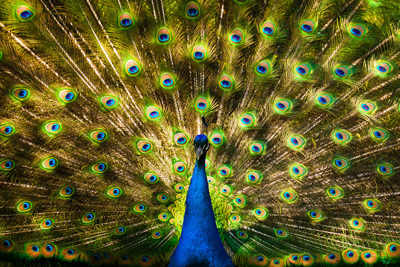
UMSL biologist Zuleyma Tang-Martínez has written a commentary about a study that pokes holes in long-held conclusions about male mating habits, such as when peacocks raise their colorful fan of tail feathers and shake them. (Photo by Benson Kua via Flickr)
During courtship, peacocks raise their colorful fan of tail feathers and shake them. The objective is to advertise to potential mates and win female favor. But a recent WIRED magazine article is poking holes in that theory, indicating that the mating dance between the sexes is far more complicated than male showmanship.
The prevailing theory in biology that males compete for female attention was established by English geneticist Angus Bateman following the outcome of a study he conducted using fruit flies. A replication of his study, however, doesn’t seem to align with his original conclusions about sexual selection. Findings of the study’s replication were published in June in Proceedings of the National Academy of Sciences.
The article further bolstered the new findings in the study by highlighting a separate commentary on the topic written by Zuleyma Tang-Martínez, Founders Professor of Biology at the University of Missouri–St. Louis.
“The results of this study provide an unassailable argument that challenges Bateman’s,” Tang- Martínez wrote in the commentary published in Proceedings of the National Academy of Sciences. She said that “at best, Bateman’s principles should be considered hypotheses and approached with great care.”














